BIREN DE
An Innovative Journey of Five Decades
Centre and Circumference
(The critique below normally focuses on the nature of Biren’s middle period work onwards, to date. While De has been a known master of portraiture from the very beginnings of his artistic career, as well as other genres that resulted in the memorable, awesome work title “Dying Ogre” executed over forty years and more, this singular artist’s deepest inner bent has all along been to express the majesty of the microcosm as the macrocosm in indissoluble union. Thus De’s brush is rigorously selective. For him the quintessential, or the apex of being in being alone has mattered, not the tertiary rungs of the pyramid of human consciousness. Thus the rarity of his speech, whether visual or oral. His work therefore may be said to be self-integrative. KM)
Centre yourself on the speck of a sun-struck dust particle or, if you like, on the fine point of an illumined pin, and you get some feel of a Biren De oil-on-canvas. But there may be other, and perhaps more apt analogies to his work: the spokes of revolving wheel – the whole thing going round and round with such speed that the hub appears still, no movement at all. No agitated movement, that is, but one that steadies the flicker of the seeing eye. The blinding light at the centre of the artist’s most eloquent works seems to re-enact the incandescence of the galactic fire. But why the obsessive recurrence of the wheel or ring of fire in his compositions? – for these represent the reunion of the soul with its own. Here the split halves, or the polar opposites of a run down world once again find the perfection of wholeness. The light ‘petals’ in De’s unique Mandalas achieve a harmonious and yet dynamic pattern, an order kin to the full blooming lotus. Certainly, the Chakra of Being seems ever to whirl majestically in this artist’s deepest thoughts.
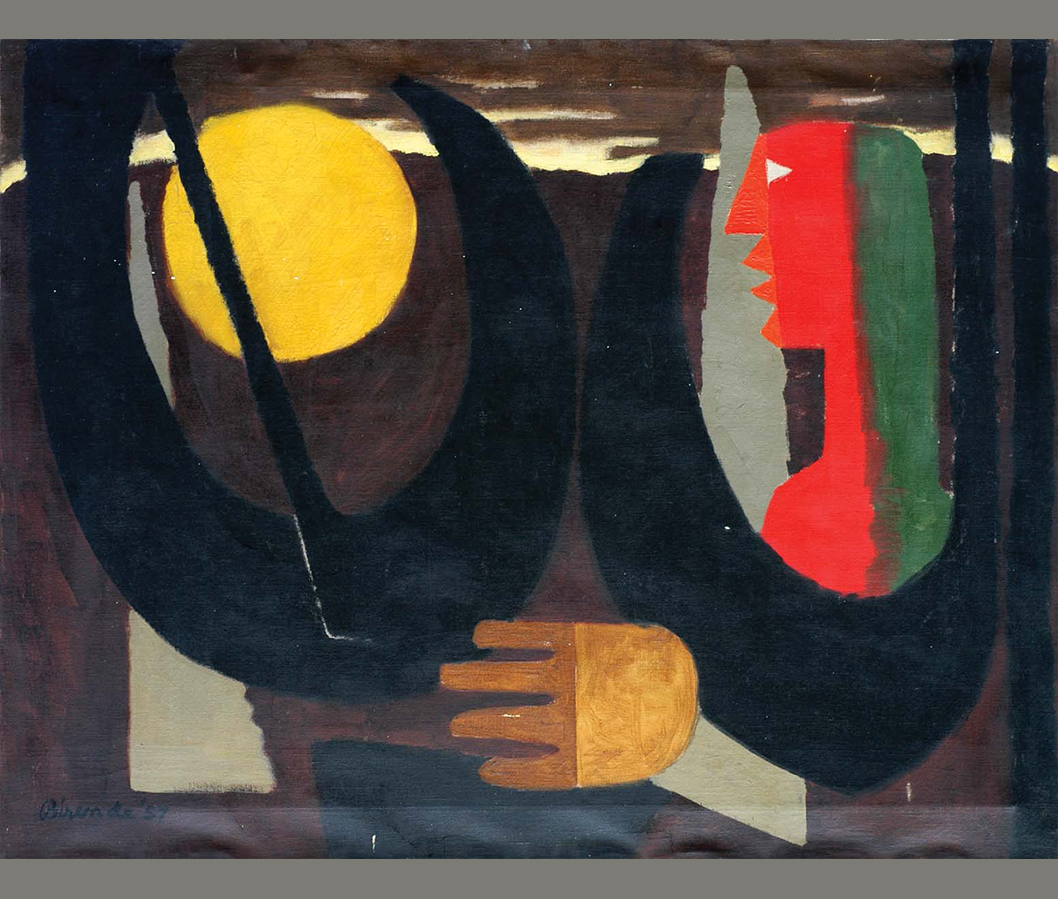
The Apparition, 1958, Oil on Canvas, 120x90 cms. Collection: Lalit Kala Akademi
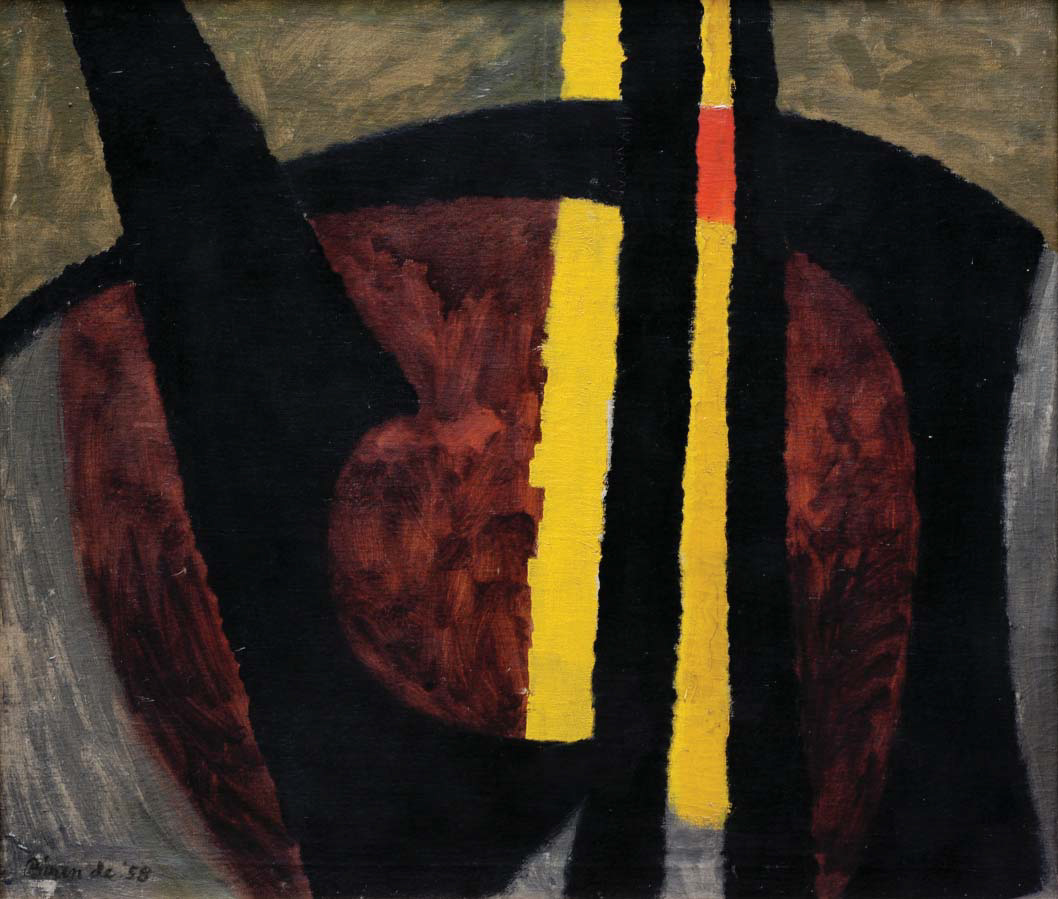
Yellow Light, 1958, Oil on Canvas, 71x81 cms. Collection: Lalit Kala Akademi
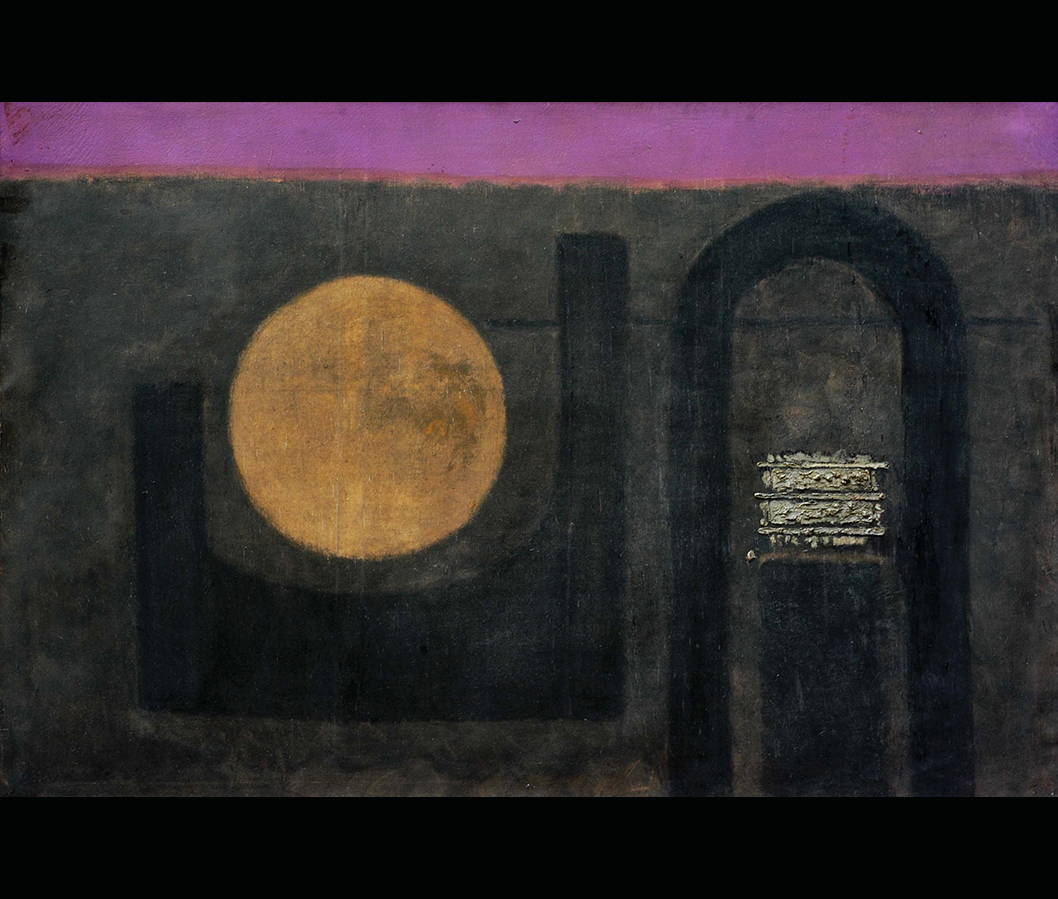
Genesis, 1963, Oil on Canvas, 122x182 cms. Collection: Lalit Kala Akadem

June 67, 1967, Oil on Canvas, 172x122 cms. Collection: Lalit Kala Akademi
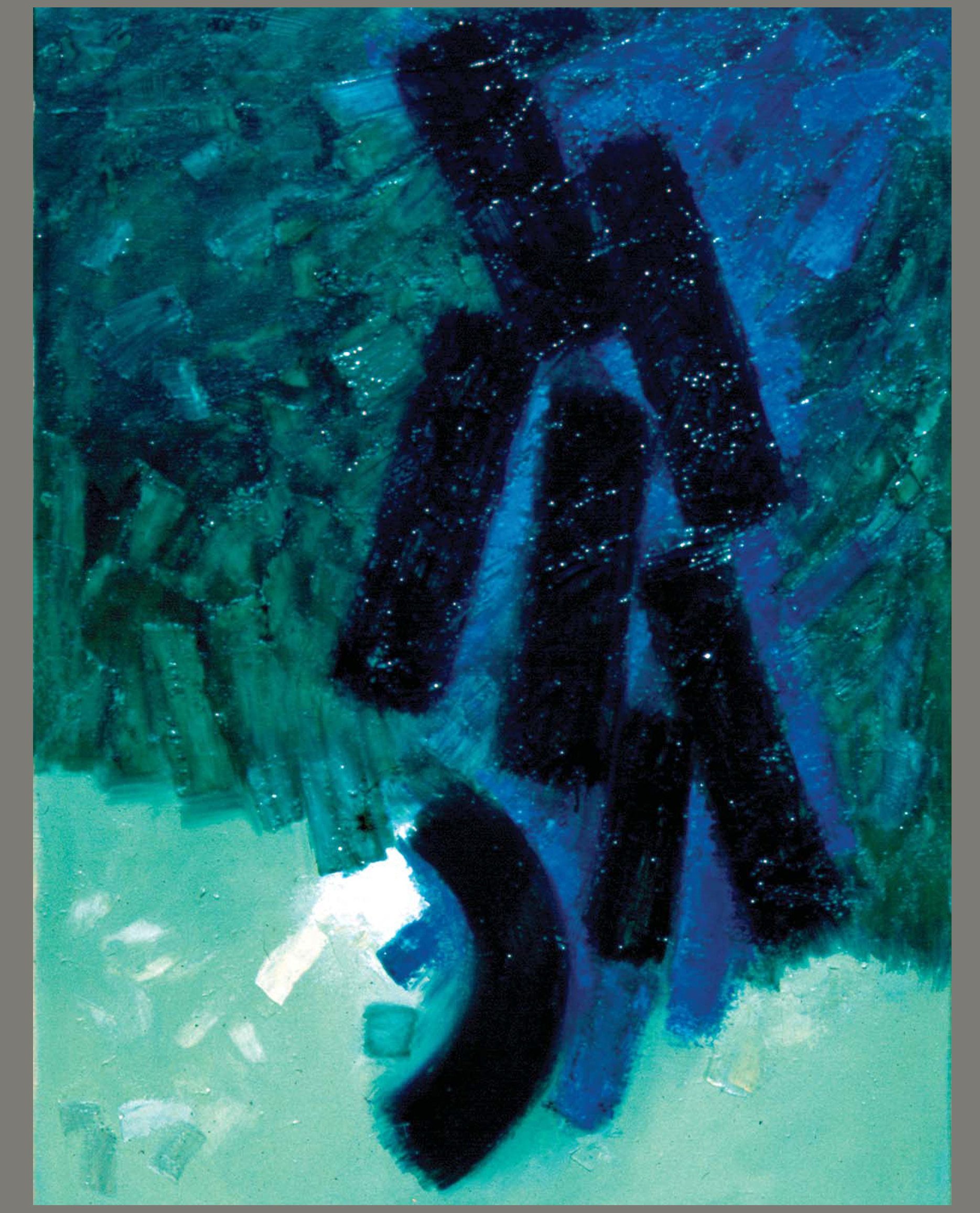
Infl ux, 1961, Oil on Canvas, 99.5x71.5 cms. Collection: Private
And yet it is towards a similar imaginative expansion that the 21st century vision strives. Quite like the unbroken unity of the self-contained elliptical shape lured the vision of the earliest clairvoyants, so now it calls out to the reflective moderns. In Biren De the mathematical harmony, of ostensibly esoteric symbols, receives telling expression in what may legitimately be termed the art of the inward eye, and so in the idiom of our own day and time. He does not chant his Mantra mechanically but infuses it with fresh associations; fresh, but still with their ultimate source in the perennial, if invisible reality. Only, he has had to hew his way out of the thicket of ordinariness step by laborious step. And so, today, in his maturest works, the extraneous, initiative gesture is nowhere in sight. He now paints only to induce a flash of inner comprehension. With the dropping away of the banal figuration from his work of the fifties, the focus on the circumference with a luminous centre became his main preoccupation. Every screw (so to speak) of the vital colour band had now been tightened in the scheme, till the body of a given composition began, as if, to spin upon its axis.
The Shakti symbols - the conventional ones – were gradually replaced by the single dazzling jewel of the legendary lotus (‘June 70’-1970). Here, then, is the wisdom of the imagination – a penetrating third eye, like the Shiva’s, raying out into the heart of the recipient.
In his work of the seventies, and onwards to those that followed (‘Painting 81’-two of them similarly titled, and ‘Painting 82’), no respite is allowed the viewer to slip away into some brown study, some minor delight. What De’s genre does is to order self, to make it jump to attention. It is the self’s integration which the painter desires, and he goes for it single- mindedly. And, without doubt, he makes us fuse into our selves – our eyes, our ears, and all our other senses brought to a moment of intensity. Here, then, is an attunement to the mystery and that awesome power that moves the tides in the ocean, as much as the bloodstream in the human veins. Such has been the painter’s prayer and life-long practice:
The mind’s observatory spies
Through its dozens of apertures
On a giant circumference:
Stand anywhere, to observe,
And there’s truth
At each point on hand.
Shift focus from chink to chink,
Swivel round and round
And you arrive at a Grand Total
That is worth more
Than its weight in gold (K.M.)

Penultimate, 1964, Oil on Canvas, 102x62 cms. Collection: Lalit Kala Akademi

June-73, 1973, Oil on Canvas, 213x175 cms. Collection: Lalit Kala Akademi
On the level Biren De’s compositions are simple, being almost like decorative patterns- patterns often come across in psychedelic design, the ones that take off after the turning disc. But this is a superficial reading of his work. For quite as when viewing an astronomer’s photographic plate (with its impression of the shell-shaped, light-waxing galaxy) we are brought to book – to more than ordinary alarm, awe and uplift – so too with his work, which is really a graphic visualization of the primal force pulsing in the germinating seed, as in the pointed star.
No concessions are made in this, the self centering. It has to be a sheer vertical rise, or it’s nothing. The wonder of De’s spinning circles sets up its own resonance in our mind, resonance, which touches off a chain of vital reactions in turn, made up as if of the deepest memory and meaning. This is how, with De, we obtain intimations into the heart of the continuum – the terrible but still recreative fire that fills space, that lights up human awareness. Tertiary images none in this art, neither are there any associations such as bubble up in subconscious reverie. Here, only the urgent tidings of being and becoming, nothing less.
This, then, is art, but one which wills to be like that divine furnace where the spirit is to be reburnished. The art may also be compared to an insucking, but cleansing whirlpool. Else, the parallel would be with Mesmer’s, before-the-eyes-swinging lustrous metal – the one that sends one on an inward trip. But with Biren De, if trance, then it is a deeply meaning- pregnant one. Here one’s entire being is to be given over to truth, the unconditional surrender to the compelling light.
To repeat, De’s art abets at the integration of personality, and that without the use of words anywhere. In his many exhibition catalogues most of his work is untitled. But if the art takes no recourse towards, there still is a sound from it as of a prayer wheel – a deep vowel sound; and this one seems aimed at not the sick or the unwell but the normal and the healthy – the strong in need of uplift from the law of averages. This particular need is the need of sublimating one’s vital powers, the heightening of awareness, the opening of the doors of perception on the fundamental stuff or reality beyond its passing forms.
De’s work does not represent an ‘escape’, even though it expresses no social concerns whatever. This, for his true concern is not with the outward I, but with the ineradicable question of being, and not being; the pressing need of renewal in a world increasingly made up of noise. It therefore denotes an act of spiritual detachment – the attitude of any upwards pining spirit.
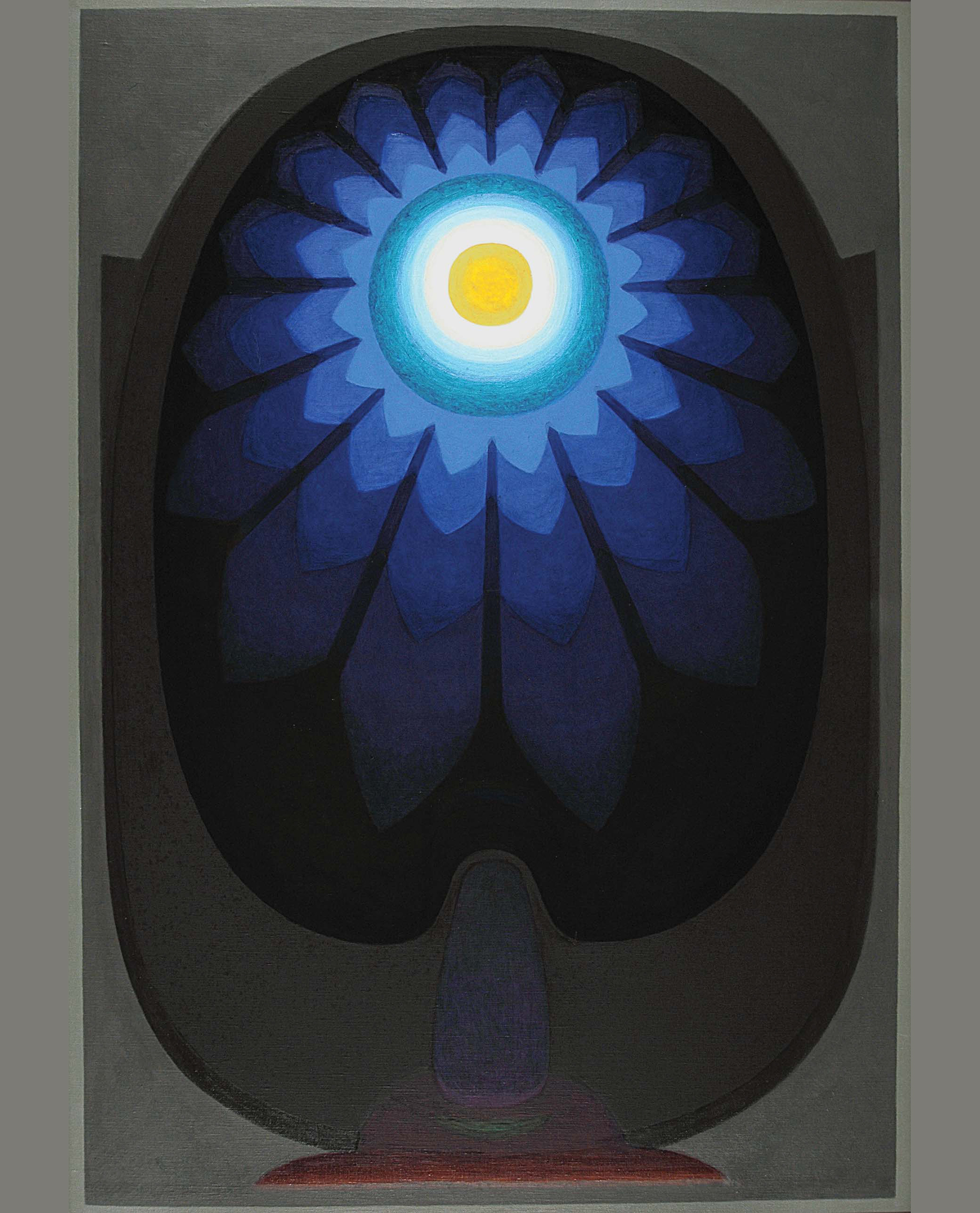
August 88, 1988, Oil on Canvas, 116.8x81.2 cms. Collection: Delhi Art Gallery
To soak in the spectrum of one of De’s works is to expose oneself to an osmosis, such as would presumably take place when initiated by a true seer. But here there is a concrete visionary directness, as much as a commanding silence. The art has no sensuous appeal to speak of, nor even the religious one based on any stereotyped ritual. Not nature alone, but nature plus an actively engaged self – the interaction of the two – goes to raise the genre to its elevated level. The genre may well be defined as an idea-ideal symbiosis. And though it is not contentless, the content has become much too unfamiliar in an age raised on empiricism, in the main.
That a continuity can be traced in De’s inspired madness will be observed as one goes over his earliest drawings. An intensity is already in evidence in the fifties, but years on years are needed to really incarnate a vision such as this one in full splendor. The artist’s brush-work shows how painstaking he has been (having shunned the short cut that the acrylics could have been for his order of composition). Thus, also, no slick touches, nor hard edges either. Knowing no hurry, and with no ambition to get rich quick – affectwise – there is nothing facile in the body of De’s output. With him the colour spectrum must fan out full, like the feathers of a peacock in glory. Only this could carry true conviction. So, the passage through the senses, to the seat of intelligence.
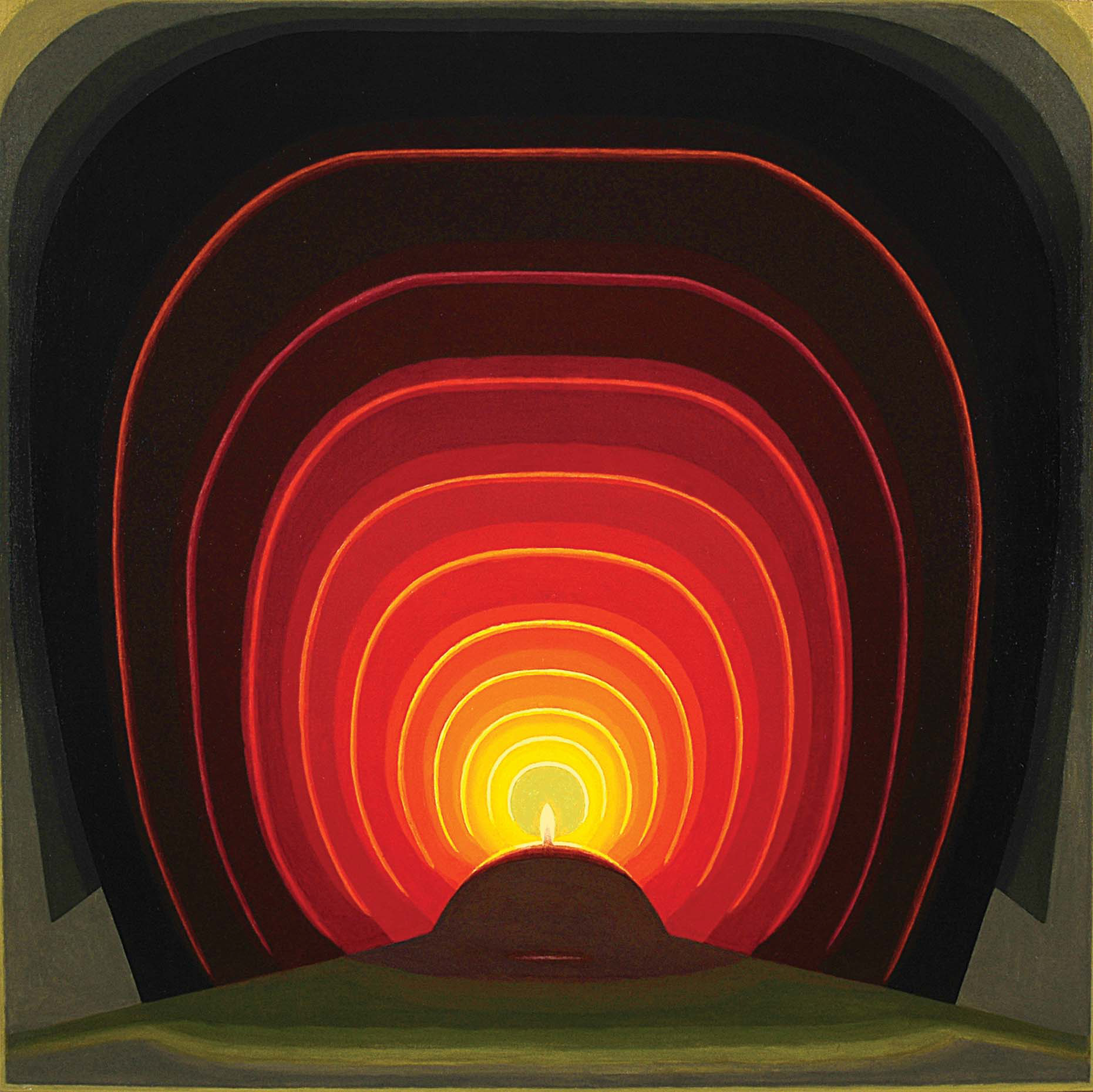
Light Ascending, 1997, Oil on Canvas, 127x127 cms. Collection: Delhi Art Gallery
De- though he is reluctant to jot down his ideas, is still as articulate in expressing his convictions as in actual performance. He is crystal clear about sticking to the strait and narrow, come what may. He knows that what kills art is compromise, and the weapon that stays temptation away is the discipline of self- communion. If therefore he has not done as well as he might in the marketplace, he is certainly the possessor of an enviable inner reserve such as betokens unshakable faith. Truly, his work is a response to the mysterious universe:
The warp and woof of the world
Pure vibration,
What pulses at the barred centre?
As if, there, a gigantic cyclotron
Quickened the particles,
And they relayed the ever-widening sonic waves –
the boom spread-eagling the hapless intruder
upon a sheer backdrop
of enormous space and savage sparks.
O, thus to be hurled beyond
a mapped universe,
and into wheeling circles!
In the inexorable swirl caught,
Eyes involuntarily closing – The head bowing. (K.M.)
Keshav Malik
Biren De
Born in Bengal on 8 October, 1926. Education: Studied at Govt. College of Arts & Crafts, Kolkata 1944-49; left Kolkata College & settled in New Delhi with his career. Solos; Kunika Art Centre, Kumar Art Gallery & Gallery Chanakya New Delhi, GC & The Window Mumbai, AIFACS; Retrospective: Dhoomimal 1950-77; International: Atelier Galerie Hamburg; Invited solo: Pitsburgh USA, Stockholm & Goteborg, Sydney Biennial, Group participations: Triennale-India, Lalit Kala Akademi, New Delhi. Symbolism & Geometry in Indian Art NGMA New Delhi, AIFACS; International: Los Angles, USA, Salon de Mai, Paris, Biennales in Mainichi, Sao Paulo, Venice, Sydney; Museum of Art, Fukuoka, Japan, Royal Academy of Art, London, Eight Contemporary Indian Artists, Sweden, other towns Greece, Belgium, Poland, Bulgaria, Yugoslavia. Auctions: Heart Mumbai & New Delhi, Osian’s Mumbai. Awards: National Akademy Award, Lalit Kala Akademi 1958 and 1964, New Delhi. Member: Visiting Faculty of the School of Planning & Architecture, New Delhi 1950-60. Appointments: Taught senior students at College of Art, New Delhi; International: Worked in New York on State Department & Fulbright Grant 1959-60; Lived & worked in Germany & Australia; Seminars: “Concepts of Space” with 81 slides of his works from 1950-1980, on “Time” organized by IGNCA, “Tradition:A Continual Renewal” organized by ICCR. Collections: NGMA, LKA, Rashtrapati Bhavan & New Delhi University New Delhi, TATA Mumbai; International: Museum of Modern Art New York. Biren De’s works are permanently exhibited in Glanberra Museum of Contemporary Indian Art, Himeji, Japan, National Gallery of Czechoslovakia, Prague and Peabody Essex Museum, Mass. USA, Berlin State Museum, Germany. The Government of India honoured Biren De with Padmashri in 1991. Lalit Kala Akademi conferred Fellowship on Biren De in 2006 for his contribution to art.

August 68, 1968, Oil on Canvas, 122x122 cms. Collection: Prof. Hartel, Berlin
 Government of India
Government of India

 Recognizing the ongoing need to position itself for the digital future, Indian Culture is an initiative by the Ministry of Culture. A platform that hosts data of cultural relevance from various repositories and institutions all over India.
Recognizing the ongoing need to position itself for the digital future, Indian Culture is an initiative by the Ministry of Culture. A platform that hosts data of cultural relevance from various repositories and institutions all over India.